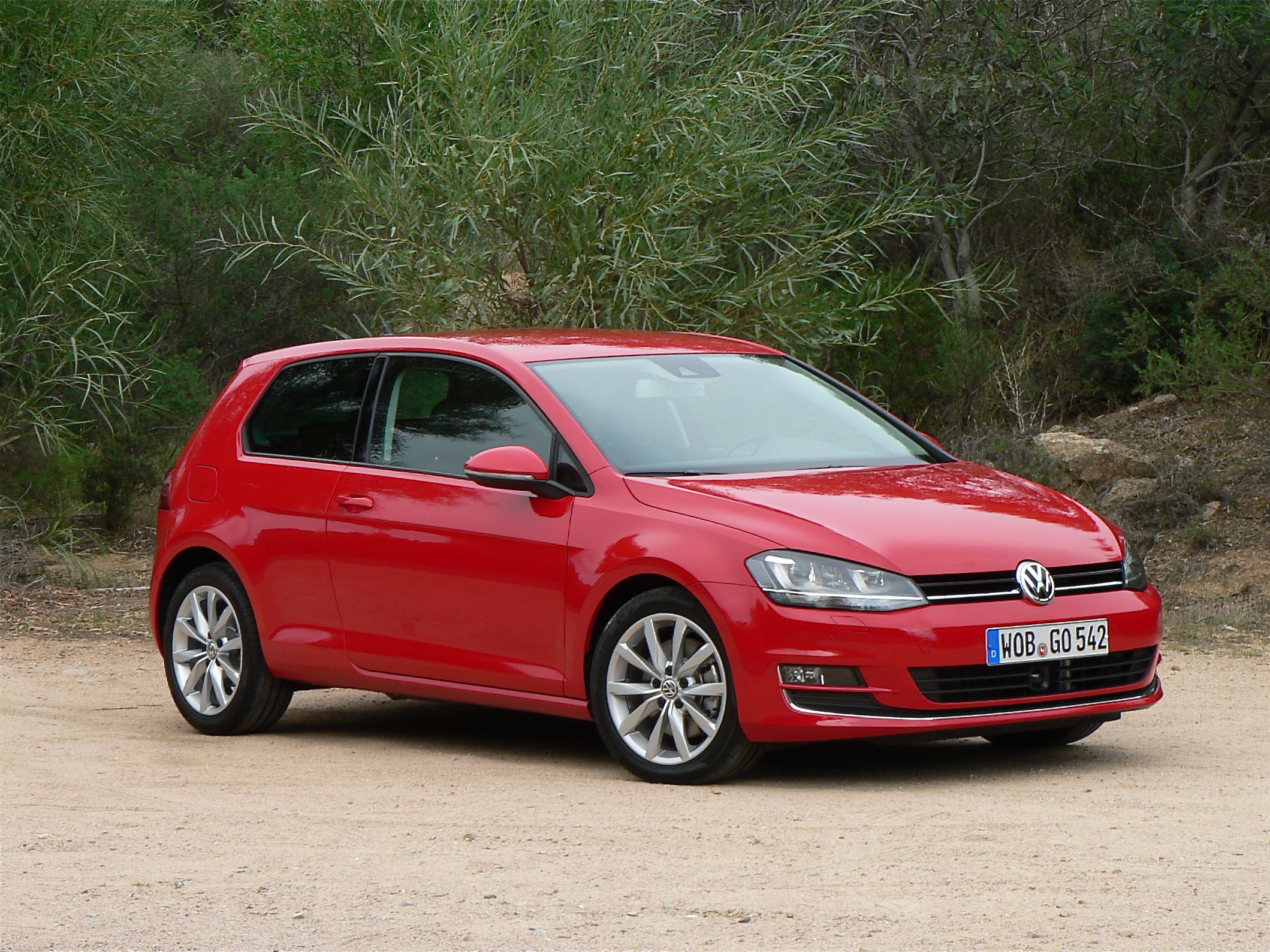 Story and photos by John LeBlanc
Story and photos by John LeBlanc
PORTO CERVO, Italy – Chances are you or someone you know has owned a Volkswagen Golf at some time or other. Over 29 million been sold since the compact hatchback was introduced in 1974, essentially replacing the German automaker’s Beetle as its People’s Car. And for many Canadians who couldn’t afford expensive BMWs or Mercedes-Benzes (like yours truly, a proud owner of a second-generation 1991 Golf diesel and a fourth-gen 2005 with the two-point-slow gas engine) the VW compact has always been an accessible German-made car.
Now in its fifth decade, the Golf still remains extremely popular worldwide. The current, sixth-generation Golf is the best-selling car in Europe and third best-selling car on the planet; right behind the first-place Toyota and Ford’s Focus. And like the two other compact cars the Golf competes with, the VW is just the right size and price for a lot of new car buyers.
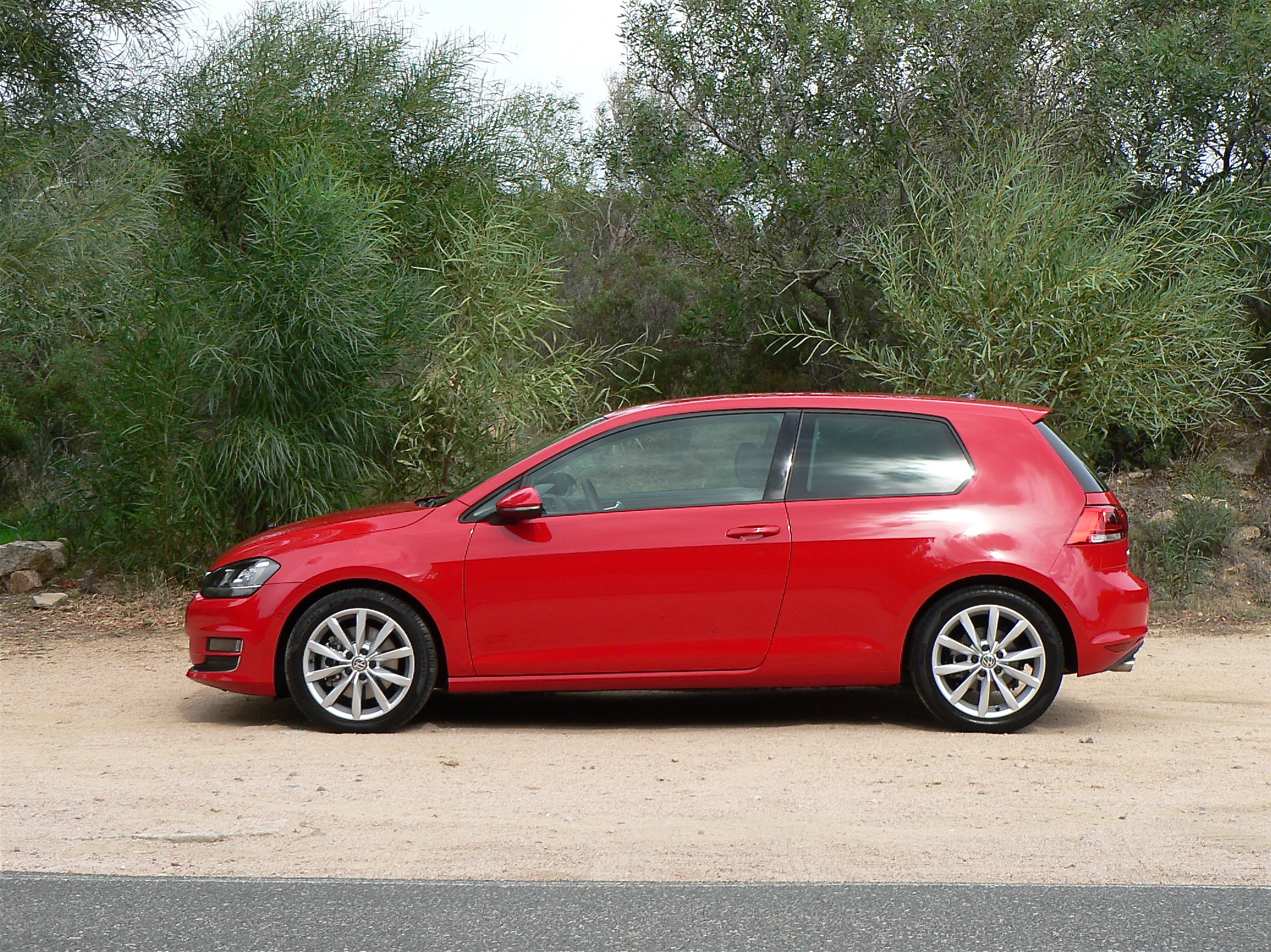
You now know why VW has a lot riding on this all-new, seventh-generation Golf (or Golf 7, as its maker wants to call it.) The compact, front-wheel-drive, five-passenger, two- and four-door hatchback made its auto show debut at this fall’s Paris event. And now VW has invited media to test drive a few examples here on the Italian Mediterranean Island of Sardinia, just months before the Golf 7 goes on-sale in 32 countries by the end of this year, with the sportier GTI and Golf Wagon scheduled for 2013. But not in Canada. The new Golf 7 family will all arrive all at once on our shores during the first half of 2014.
Just as Japan’s Lexus and Infiniti woke up Germany’s luxury brands in the 1990s, Korea’s Hyundai-Kia Motors is defining the term “value” with mainstream brands. So like the new designed-for-Europe Hyundai Elantra GT and the Kia Cee’d, VW is offering more standard kit on the Golf 7— like the XDS front locking differential (previously only available on the GTI), stop/start fuel-saving technology and a colour TFT display screen. Yet European pricing remains virtually the same. When the VW eventually arrives in Canada, expect similar pricing to today’s models, where two-door gasoline-engine Golfs start at $19,975 and diesel models at $25,425.
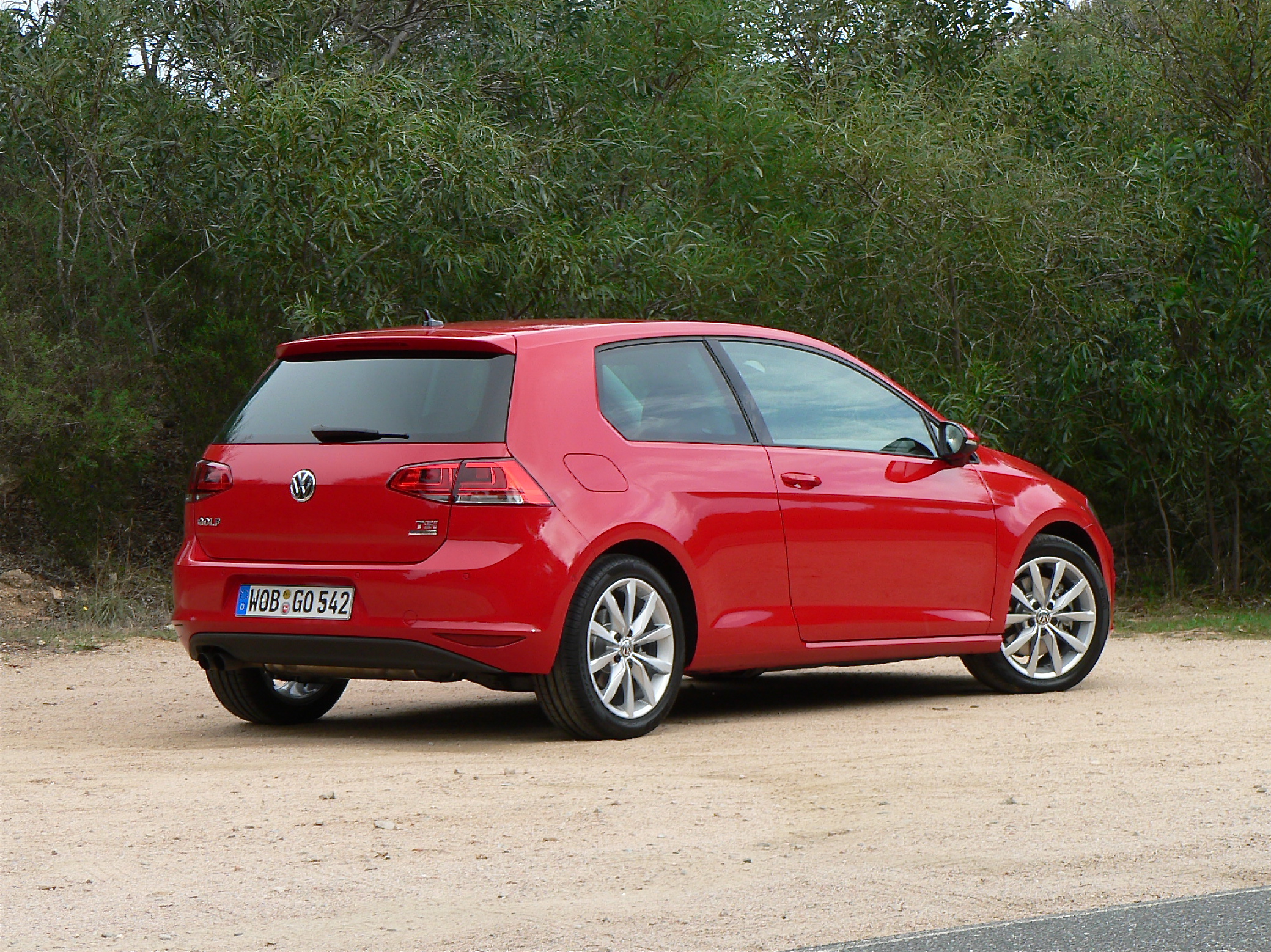
Recognizing the economic and demographic trends of new car buyers opting for smaller vehicles, VW is adding a slew of high-tech safety technologies to the Golf 7 normally associated with luxury brands. However, we were told that new features like multi-collision braking system, city emergency braking, adaptive cruise control, driver alert system and lane-keeping assistance system won’t be available on the Canadian models.
The biggest changes with the Golf 7 can only be seen in engineering drawings. Along with the recently-launched European Audi A3 hatch, the VW compact is one of the first Volkswagen Group vehicles hatched from a new global platform. Called Modular Transverse Matrix (MTM), the flexible architecture can be tailored to fit every one of the German automaker’s 60-odd transversely-mounted engine cars, from the Up! city car to the mid-size Passat sedan. And VW designers say they took full advantage of MTM’s flexibility.
The goal was to make the Golf 7 look familiar “from 20 metres away”. Which it does. The Golf 7’s passenger compartment has been shifted towards the rear, delivering what Volkswagen’s head designer, Klaus Bischoff calls the “proportions of premium-class vehicles.” But from its kinkier C-pillar to its chiseled front-end (that falls inline with the looks of today’s Jetta and Passat) all the new Golf’s lines are familiar but crisper and tighter than the outgoing sixth-gen model.
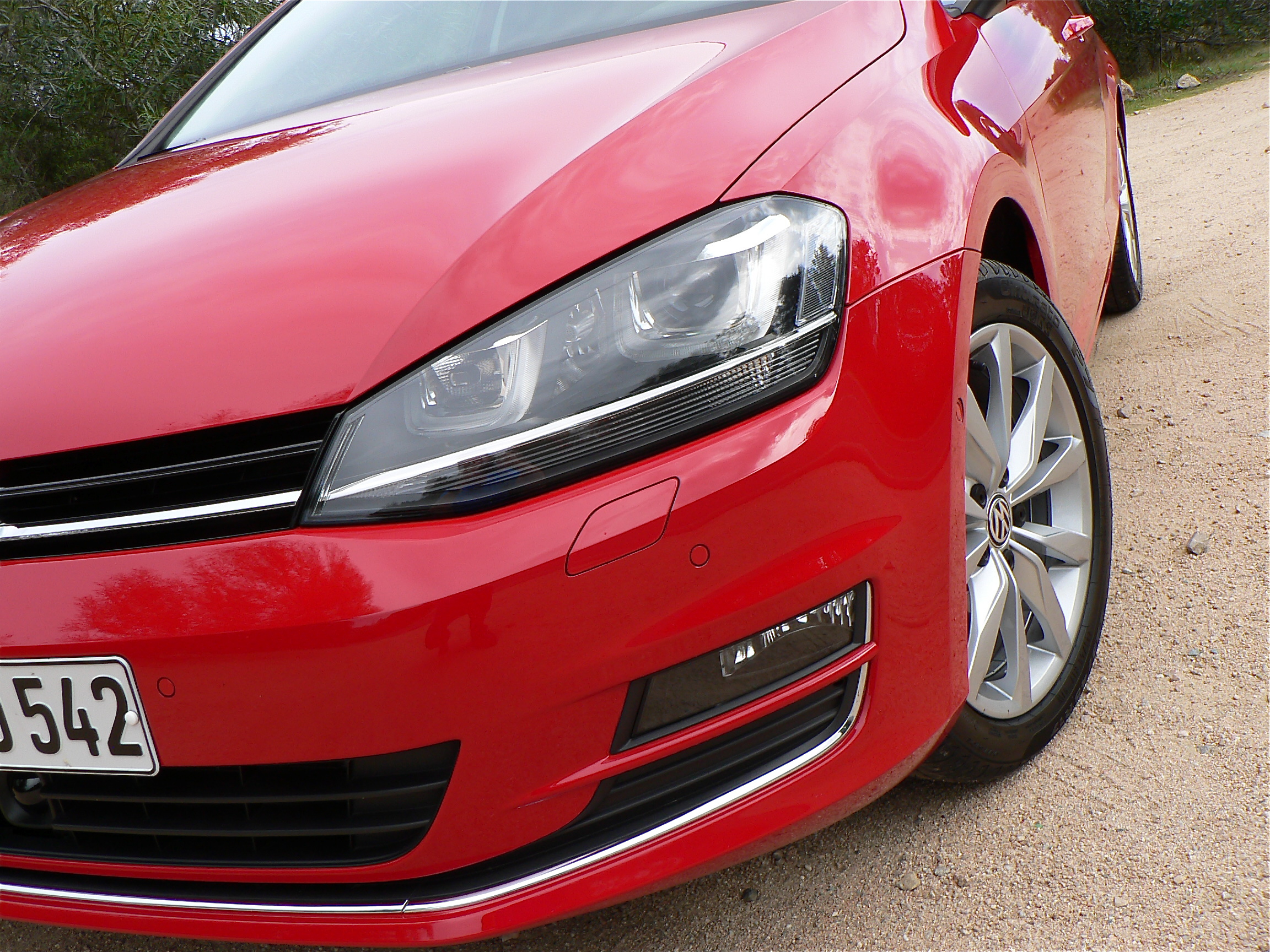
Though shorter overhangs, bigger wheels and a lower roof profile give it a more athletic, hunkered-down stance, it’s still unmistakably a Golf. But get closer, and to my eyes, the details make the new car look more substantial and modern over the current model. Of note are delicate chrome strips that start in the front grille and continues through the car’s clear headlight bezels (on the GTI, the pinstripe will be red).
Perhaps the biggest leap forward for the Golf 7 is inside. Compared to the decontented North American Jetta and Passat sedans, the interior of the Golf 7 feels premium, like the mid-size VW CC sedan and Tiguan and Touareg SUVs. In fact, just as rivals were getting close in regards to fit and finish and use of quality materials, VW’s interior designers have upped the standards again. In the well-appointed European-spec Golf 7s I drove, there were plenty of chrome detailing contrasted against piano-back trim. And some models were equipped with rich-feeling alcantara seats inserts.
Both the two- and four-door versions are also noticeably larger inside. The cabin is 30 millimetres wider, with more legroom front and back and 30 litres more rear cargo space. VW designers also wanted to make the 2014 Golf’s interior more driver oriented. The centre dash is now angled towards the driver, with a new iPad-quality touch-screen infotainment screen. Below that, the climate controls have been simplified, and so have the now standard USB audio /auxiliary jack connections.
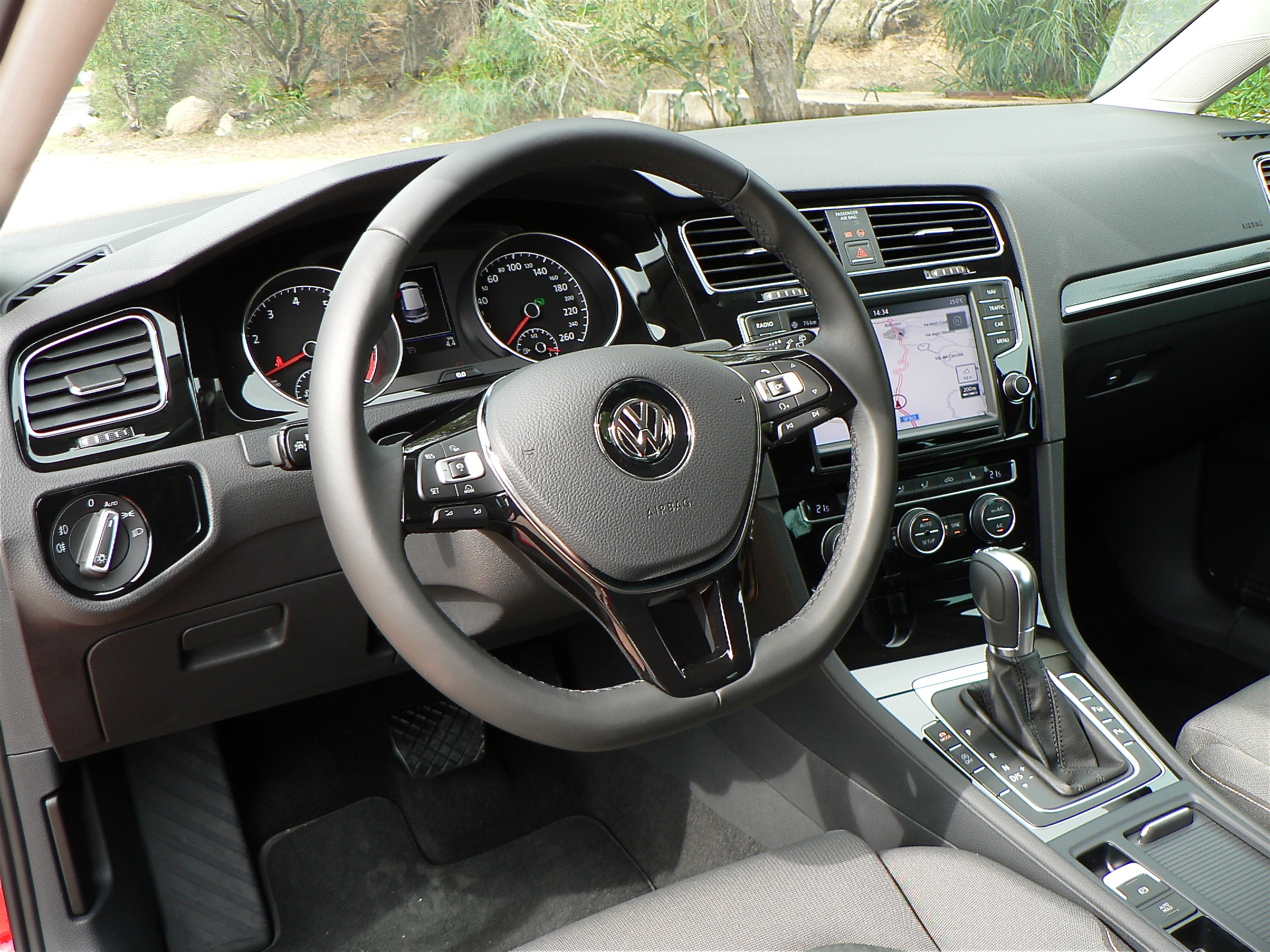
Besides its modularity, VW’s MTM platform was also designed to save weight without resorting to using expensive aluminum.. The Golf 7 is longer and wider than the outgoing model, with more luxury features and extra room for passengers and cargo. But on average, it weighs roughly 100 kilograms lighter — a quality that helps the new compact hatch at the pumps and on the road.
VW says the weight reduction alone saves 0.3 L/100 km across the board. So although the European Golf engine lineup remains familiar, VW can boast up to 23 per cent reduction in fuel economy on some models. As usual, European Golf 7 customers get more powertrain variety than VW Canada’s one-diesel and one gas-engine lineup. On top of the two gas and two diesel engines that will be available at launch, next year, a new Golf GTI with a more powerful turbocharged 2.0-litre gas four-cylinder, GTD (essentially a diesel GTI), hybrid-challenging, high-mileage BlueMotion diesel, compressed natural gas model and an electric powered e-Golf will arrive in Europe.
I had a chance to the drive two-door Golf 7s powered by the larger of the European diesel and gas mills. While five- and six-speed manual transmissions are on offer, the media drive event models I drove were mated to a six- and seven-speed duel-clutch automatics, respectively.
Until the diesel Chevrolet Cruze show up next year, the Golf is the only car in its class that offers Canadians a diesel engine option. And that option will continue with the new Golf 7. VW Canada says that the larger, 2.0 L turbo-diesel I drove here (with 148 hp and 236 lb-ft of torque) will more than likely be the engine that replaces the current Golf diesel.
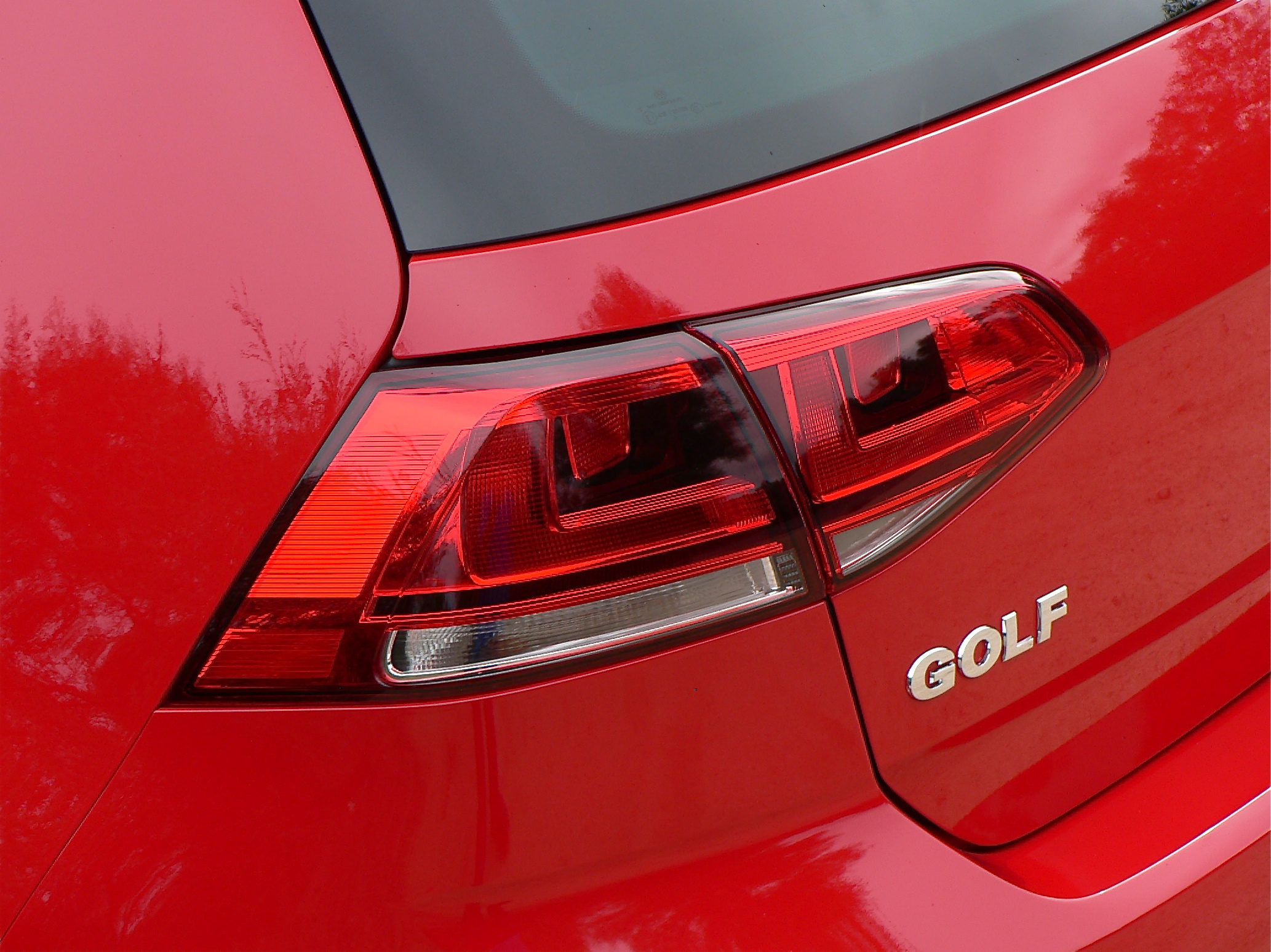
While the diesel scores a hybrid-rivaling fuel economy rating of 4.1 L/100 km, the Golf 7’s 1.4 L turbo-gas unit (with 138 hp and 184 lb-ft) was much more engaging to drive. With “active cylinder management” (that shuts down two cylinders when appropriate), the 1.4 gas mill scores an impressive 4.7L/100 km rating. Better yet: It felt smooth, refined and eager to rev and would make an excellent replacement for the current Golf’s 2.5 L five-cylinder.
Physics 101 says a lighter car will also corner better. So the 100 kilograms-or-so the new Golf 7 has shed over its predecessor also makes the VW hatch a more agile car to drive. I spent a couple of hours driving the diesel and gas models over twisty, well-paved Sardinian mountain roads. And while the 1.4 gas feels more eager to rev than the 2.0 diesel, VW says the time its takes to go from 0-100 km/h between the two engines is similar: 8.4 in the gas; 8.6 in the diesel.
Whether powered by gas or diesel, the new Golf 7 is much more eager to turn into corners than what I can remember from the last six-gen Golf I drove. The XDS front-diff-lock helps here. It applies the brakes to help mitigate understeer. But similar to upscale Audis, the Golf’s driving characteristics can be customized via the new Dynamic Chassis Control system, which offers five, self-explanatory modes — Eco, Sport, Normal, Individual and Comfort.
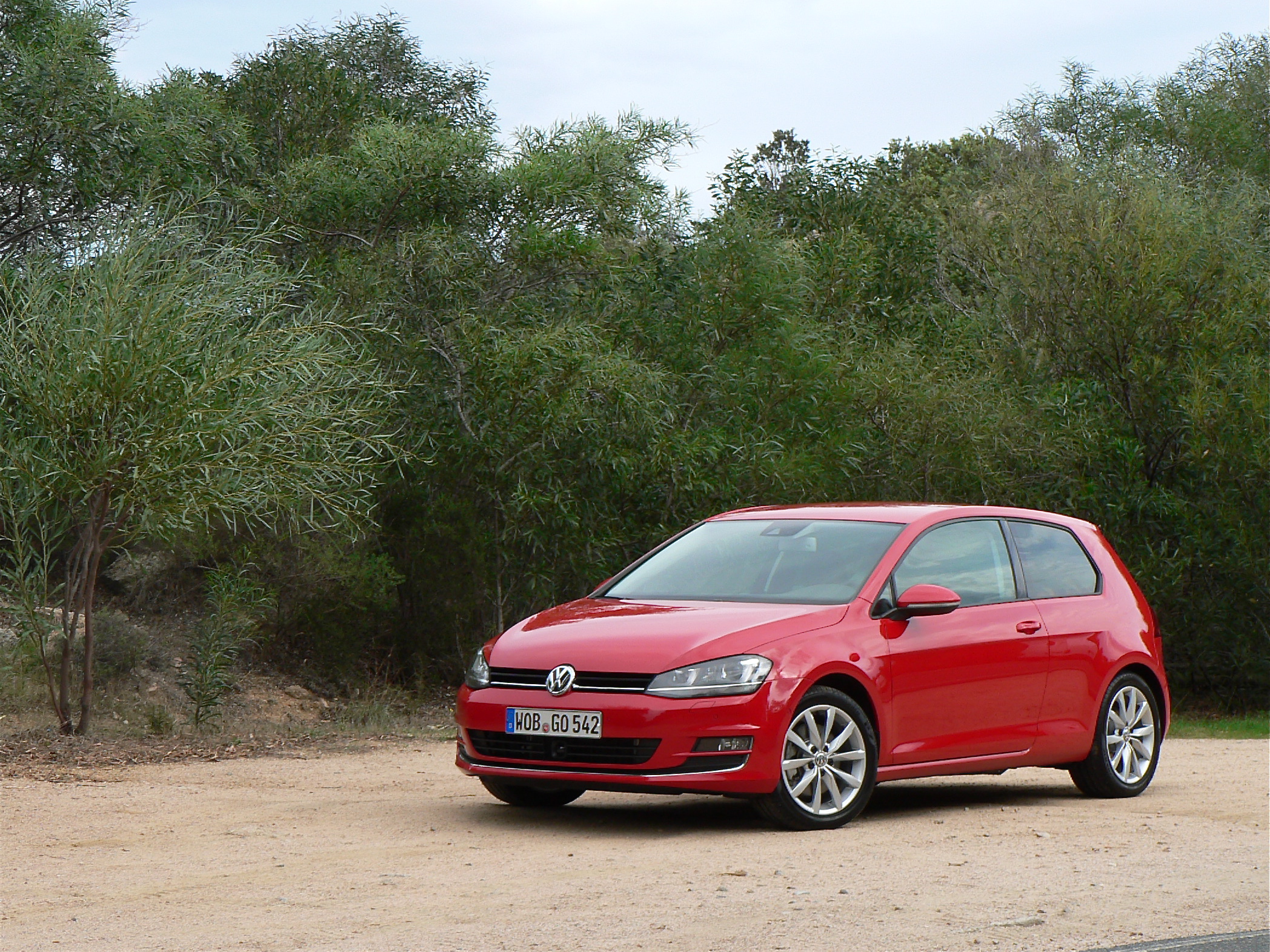
The differences in the various DCC modes are subtle. But whatever mode is picked, the Golf 7 is always on its best behaviour. Quiet, comfortable, stable — it’s one of the most refined small cars I’ve ever driven in this price range. That said, even in Sport mode, there’s a thin layer separating the driver from what is going on with the car’s steering, suspension and tires. Driving enthusiasts will want to opt for the GTI to have that layer removed.
Larger, yet lighter. Luxury car features, but for the same price. It seems that Volkswagen hasn’t pulled any punches or taken any chances with its new Golf 7. Between the extra room inside, big-car ride and handling refinement, the Golf 7 is a very complete package, arguably the best small car in the world right now.
And although VW Canada hasn’t committed to what engines will be powering our Golf 7s when they arrive in 2014, they are assuring me that the Canadian models (without some of the high-tech safety features) will fundamentally be the same premium-feeling European cars I drove here. That’s should increase the chances that you or someone you know will be interested in the latest edition of the Golf.
First Drive: 2012 Volkswagen 1.4 TSI DSG/2.0 TDI DSG
WHAT I LIKED: Bigger, but lighter; luxury-car features, build-quality, and driving characteristics; unique-for-its-class diesel engine option.
WHAT I DIDN'T: Majority of new safety devices won’t make it to North America; driving enthusiasts will want the sportier GTI; not coming to Canada until 2014.
Est. base prices: $19,975/$25,425.
Type of vehicle: FWD, compact hatchback
Engines: 1.4 L I4 turbocharged gas/1.6 L I4 turbocharged gas
Power: 138/148 hp
Torque: 184/236 lb-ft.
Transmissions: Six-speed dual-clutch automatic/seven-speed dual-clutch automatic
Fuel consumption (E.U. combined L/100 km): 4.7/4.1
Competition: Ford Focus, Hyundai Elantra GT, Kia Forte5, Mazda3 Sport, Mitsubishi Lancer
Comments